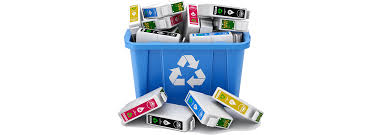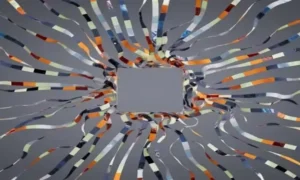Every year, millions of printer cartridges end up in landfills across the globe, creating a significant environmental challenge that most office workers and home users never consider. These seemingly small plastic containers contain complex materials including metals, plastics, and chemical residues that can take up to 1,000 years to decompose naturally. Learning how to dispose of printer toner and ink cartridges properly isn’t just an environmental responsibility—it’s becoming a legal requirement in many jurisdictions and can even provide financial benefits for businesses and individuals committed to sustainable practices.
The printing industry has responded to growing environmental concerns by developing comprehensive recycling programs, but success depends on consumer participation and understanding of proper disposal methods. When you dispose of printer toner and ink cartridges properly through established recycling channels, you’re contributing to a circular economy that reduces waste, conserves resources, and supports sustainable manufacturing practices.
Understanding the Environmental Impact
The Scale of the Problem
Approximately 375 million ink and toner cartridges are discarded annually in the United States alone, with less than 30% being recycled properly. Each cartridge contains between 2-4 ounces of plastic, plus metal components, electronic chips, and residual ink or toner. When multiplied across millions of cartridges, this represents thousands of tons of recoverable materials being wasted in landfills.
The environmental impact extends beyond just physical waste. Manufacturing new cartridges requires significant energy and raw materials, including petroleum-based plastics and rare earth metals used in electronic components. Proper recycling can reduce the need for virgin materials by up to 80%, dramatically decreasing the carbon footprint associated with cartridge production.
Toxic Material Considerations
Toner and ink formulations contain various chemicals that can be harmful if not handled properly. While modern cartridges are designed to be safe during normal use, improper disposal can lead to chemical leaching into soil and groundwater. Some older cartridges may contain heavy metals like cadmium or mercury, making proper disposal even more critical for environmental and public health protection.
Manufacturer Take-Back Programs
HP Planet Partners Program
HP operates one of the most comprehensive cartridge recycling programs in the industry, accepting HP-branded cartridges from any source at no cost. The program processes cartridges through a closed-loop system where materials are recovered and used to manufacture new cartridges and other products. HP has recycled over 875 million cartridges since the program’s inception, demonstrating the significant impact of manufacturer-led initiatives.
Participation is simple: users can print prepaid shipping labels from HP’s website, package their used cartridges, and send them for processing. HP also partners with major retailers to provide drop-off locations, making the program accessible regardless of location or shipping preferences.
Canon Cartridge Return Program
Canon’s environmental commitment includes comprehensive cartridge recycling that extends beyond their own products. The program accepts Canon-branded cartridges and provides detailed tracking of environmental benefits, including reports on materials recovered and carbon emissions avoided through recycling rather than disposal.
Canon has invested heavily in recycling infrastructure, operating dedicated facilities that can process thousands of cartridges daily while meeting strict environmental standards. Their closed-loop manufacturing process incorporates recycled materials into new products, creating genuine circular economy benefits.
Epson Ink Cartridge Recycling
Epson’s recycling program emphasizes the recovery of high-value materials from their cartridges, particularly focusing on plastic components and electronic elements. The company provides both mail-back options and retail partnerships, ensuring convenient access for all users regardless of volume or location.
Retail Drop-Off Programs
Office Supply Store Initiatives
Major office supply retailers including Staples, Office Depot, and Best Buy operate cartridge recycling programs that accept cartridges from any manufacturer. These programs often provide incentives such as store credits or discounts on future purchases, creating financial motivation for proper disposal.
Staples’ cartridge recycling program offers $2 in rewards for each qualifying cartridge, up to 20 cartridges per month. This program has collected millions of cartridges and demonstrates how retail partnerships can make recycling both convenient and rewarding for consumers.
Big Box Retailer Programs
Walmart, Target, and other major retailers have expanded their recycling programs to include cartridges alongside other electronic waste. These programs benefit from the retailers’ extensive geographic presence, making proper disposal accessible to communities without specialized recycling facilities.
Third-Party Recycling Services
Specialized Recycling Companies
Companies like Earth911 and Call2Recycle operate comprehensive recycling networks that process cartridges alongside other electronic waste. These services often provide pickup options for businesses generating large volumes of used cartridges, making compliance easier for organizations with sustainability commitments.
These specialized services typically offer certificates of recycling that document environmental benefits, helping businesses meet corporate sustainability reporting requirements and demonstrate environmental stewardship to stakeholders.
Mail-Back Services
Several companies operate mail-back recycling services that provide prepaid shipping materials and process cartridges at certified facilities. These services are particularly valuable for remote locations or businesses that prefer centralized waste management solutions.
Business and Institutional Recycling
Corporate Sustainability Programs
Many businesses are integrating cartridge recycling into broader sustainability initiatives, recognizing both environmental benefits and potential cost savings. Some companies negotiate volume discounts with suppliers who offer cartridge take-back services, reducing both waste disposal costs and procurement expenses.
Large organizations often establish collection points throughout their facilities, making participation convenient for employees while centralizing logistics for efficient processing. These programs frequently include employee education components that increase participation rates and reinforce corporate environmental values.
Educational Institution Programs
Schools and universities are increasingly implementing cartridge recycling programs that serve dual purposes: reducing environmental impact and generating funds for educational programs. Some organizations earn revenue by partnering with remanufacturing companies that purchase used cartridges for refurbishment and resale.
Preparation and Best Practices
Proper Packaging Procedures
When preparing cartridges for recycling, leave them in their protective packaging or wrap them in newspaper to prevent toner or ink leakage during transport. Keep different cartridge types separated, as recycling facilities often process ink and toner cartridges through different systems optimized for their specific materials.
Remove any tape or labels that might interfere with automated sorting equipment, but leave manufacturer labels and part numbers intact as these help recyclers identify appropriate processing methods. For businesses generating large volumes, consider investing in collection containers that protect cartridges and streamline logistics.
Timing and Storage Considerations
Store used cartridges in cool, dry locations away from direct sunlight to prevent degradation that might complicate recycling processes. While cartridges can typically be stored for extended periods before recycling, prompt disposal is recommended to minimize storage requirements and ensure materials remain in optimal condition for recovery.
For businesses, establishing regular collection schedules prevents accumulation of large quantities while ensuring consistent participation in recycling programs. Many recycling services offer scheduled pickups that align with other waste management activities.
Legal and Regulatory Considerations
State and Local Requirements
Several states have enacted legislation requiring proper disposal of electronic waste, including printer cartridges. California, New York, and other states prohibit cartridge disposal in regular trash, making recycling not just environmentally responsible but legally required.
Businesses operating in multiple jurisdictions should familiarize themselves with varying requirements and establish procedures that meet the most stringent applicable standards. Compliance documentation may be required for audit purposes, making partnership with certified recyclers valuable for regulatory compliance.
Corporate Compliance Requirements
Publicly traded companies and organizations with environmental certifications often face requirements to document waste disposal practices, including cartridge recycling. Proper disposal procedures and documentation support compliance with various environmental standards and demonstrate corporate responsibility to stakeholders.
Economic Benefits of Proper Disposal
Cost Savings Through Programs
Many recycling programs offer financial incentives that can offset cartridge costs. Retail reward programs, manufacturer credits, and bulk recycling payments can provide meaningful savings for both individual users and businesses with high printing volumes.
Some organizations generate revenue by selling used cartridges to remanufacturing companies, creating positive cash flow from what was previously a waste disposal expense. These programs require volume and consistent quality but can provide meaningful economic benefits for qualifying organizations.
Avoiding Disposal Costs
Proper recycling eliminates waste disposal fees associated with regular trash pickup and reduces the volume of waste requiring conventional disposal. For businesses paying for waste management services by volume or weight, cartridge recycling can provide measurable cost reductions.
Future Trends and Innovations
Circular Economy Integration
Manufacturers are increasingly designing cartridges with end-of-life recycling in mind, using materials and construction methods that facilitate efficient recovery and reuse. These design innovations support closed-loop manufacturing where recycled materials directly replace virgin inputs in new products.
Technology-Enhanced Tracking
New tracking technologies allow users to monitor the environmental impact of their recycling activities, providing detailed reports on materials recovered and environmental benefits achieved. These systems support corporate sustainability reporting and help individuals understand their environmental contributions.
To dispose of printer toner and ink cartridges properly, users should take advantage of multiple available programs and choose options that best fit their needs and circumstances. Retailers like DealJustDeal (https://www.dealjustdeal.com/)not only provide quality replacement cartridges but also support proper disposal by educating customers about recycling options and partnering with certified recycling services.
The key to successful cartridge recycling lies in making proper disposal as convenient as purchasing new cartridges. By integrating recycling into regular purchasing routines and taking advantage of available incentive programs, users can contribute to environmental sustainability while potentially reducing their printing costs. Whether through manufacturer programs, retail partnerships, or specialized recycling services, multiple pathways exist to ensure that every cartridge is disposed of properly and contributes to a more sustainable printing ecosystem.





























